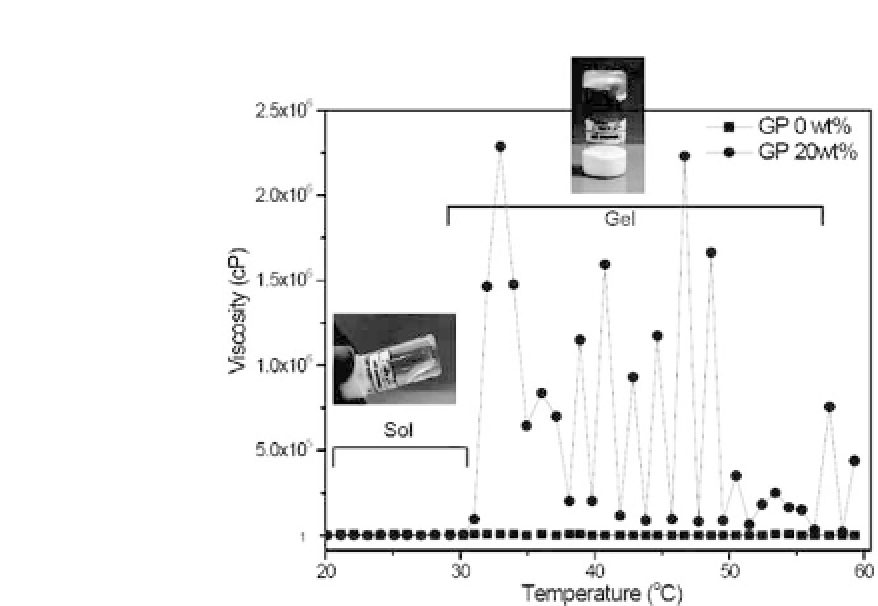Biomedical Engineering Reference
In-Depth Information
Figure 7.3.
Viscosity vs. temperature curves for chitosan solutions with-
out and with GP.
Besides GP, many anionic compounds such as polylactide
(PLA), hyaluronic acid, thioglycolic acid, calcium phosphate cement,
fucoidan,andheparin,canactasanelectrostaticinteractionpointto
make
in situ
-forming chitosan gel.
11
-
16
When a chitosan solution in the presence of anionic compounds
is injected into the body, it successfully forms a gel scaffold and,
furthermore, maintains this structure for at least a few months. In
addition,
in situ
-forming chitosan gel scaffolds act as suitable bio-
compatible substrates for the attachment and proliferation of stem
cells(embryonicstemcells[ESCs],bonemarrowstemcells[BMSCs],
muscle-derived stem cells [MDSCs], or adipose-derived stem cells
[ADSCs]).Thesecharacteristicssuggestthat
in situ
-formingchitosan
gel scaffolds may be a promising alternative to
ex vivo
-fabricated
scaffolds.
17
-
19
With the eventual goal of applying
in situ
-forming chitosan
gel scaffolds for injectable therapeutic tissue engineering,
in
situ
-forming chitosan gel scaffolds can be utilized in tissue-
engineered skin, cartilage, cardiac, bone, and nerve regeneration.
20








Search WWH ::

Custom Search